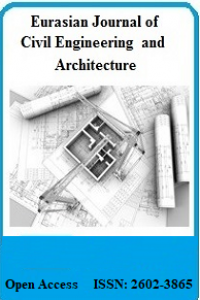Influence of Polyethylene on Fatigue Parameters of Bitumens
Influence of Polyethylene on Fatigue Parameters of Bitumens
Polyethylene, modification polymer, fatigue parameter,
___
- Asphalt Institute. 2001. SUPERPAVE Mix Design Series No. 2 (SP-2). Asphalt Institute Research Center, Lexington.
- ASTM D2872-12. 2012. Standard test method for effect of heat and air on a moving film of asphalt (Rolling Thin-Film Oven Test). West Conshohocken (PA), USA: American Society for Testing and Materials.
- ASTM D6521-05. 2005. Standard practice for accelerated aging of asphalt binder using a pressurized aging vessel (PAV). West Conshohocken (PA), USA: American Society for Testing and Materials.
- Chen, J. S., Liao, M. C. & Shiah, M. S. 2002. Asphalt modified by styrene-butadiene-styrene tri block copolymer: Morphology and model. Journal of Materials in Civil Engineering, 14(3), 224-229. doi: http://dx.doi.org/10.1061/(ASCE)0899-1561(2002)14:3(224)
- Edwards, Y. & Redelius, P. 2003. Rheological effects of waxes in bitumen. Energy and Fuels, 17(3), 511-520. doi: 10.1021/ef020202b
- Lu, X. & Redelius, P. 2006. Compositional and structural characterization of waxes isolated\n from bitumens. American Chemical Society: Energy & Fuels, 20(2), 653-660. doi: 10.1021/ef0503414
- Lyne, A., Wallqvist, V. & Birgisson, B. 2013. Adhesive surface characteristics of bitumen binders investigated by Atomic Force Microscopy. Fuel, 113, 248-256. doi: 10.1016/j.fuel.2013.05.042
- Punith, V. S. 2005. Studies on the performance of bituminous paving mixtures utilising recycling plastics. PhD Thesis, Department of Civil Engineering, Bangalore University, Bangalore, India.
- Wekumbura, C., Stastna, J. & Zanzotto, L. 2007. Destruction and recovery of internal structure in polymer-modified asphalts. Journal of Materials in Civil Engineering, 19(3), 227-232. doi: 10.1061/(ASCE)0899-1561(2007)19:32(27)
- Zhu, J., Birgisson, B. & Kringos, N. 2014. Polymer modification of bitumen: Advances and challenges. European Polymer Journal, 54, 18-38. Doi: 10.1016/j.eurpolymj.2014.02.005
- Başlangıç: 2017
- Yayıncı: Serkan ŞAHİNKAYA
Evaluation of Static and Dynamic Behavior of Rigid Columns
Ayse Bengu SUNBUL, Hüseyin MUNGAN, Fatih SÜNBÜL
Ecological Approaches in Historical Public Buildings; Talas Old American College
Fazıl AKDAĞ, Zübeyde Özlem PARLAK BİÇER, Esra ATEŞOĞLU
Investigation of Seismic Behavior of a Clay Core Rock fill Dam Using Finite Element Method
Ayse Bengu SUNBUL, Hüseyin MUNGAN, Fatih SÜNBÜL, Murat Emre KARTAL
A Biomimetic Approach to Rainwater Harvesting Strategies Through the Use of Buildings
Duygunur ASLAN, Semra ARSLAN SELÇUK
